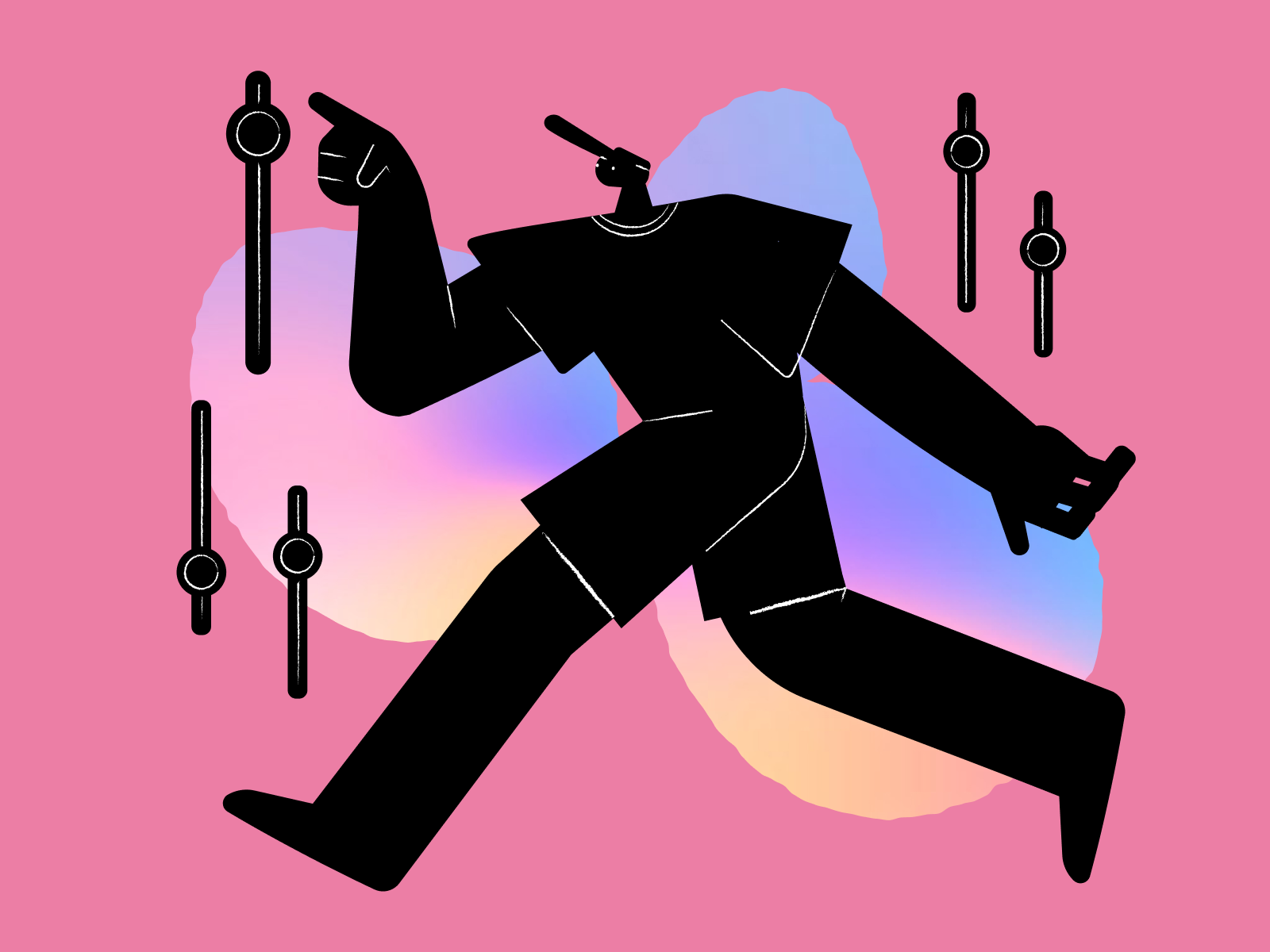Immersive content has rapidly gained traction in recent years thanks to developments in interactivity and animation. Designers and teams can now build even more engaging user experiences with interactive animation. But what is interactive animation and how can you start incorporating it into your product designs?
Keep reading to discover how to enhance your design work with interactivity. ✨
Thanks to our friends at Rive for sponsoring this blog post!
What is interactive animation?
Unlike traditional animation, interactive animation is designed to respond to user input, creating a more dynamic and engaging experience.
In interactive animation, a computer application generates animation in real-time based on user inputs like hovering, clicking, scrolling, or other prompts. This type of animation allows viewers to interact and engage with your design on several different levels.
The benefits of interactive animation
An interactive animation encourages viewers to engage and participate. When used thoughtfully, interactive animation can:
👀 Improves engagement and conversions
There’s a reason why interactive content is more effective at holding viewer attention than static content. One of the major benefits of interactive animation is that it helps prompt users to take specific actions, such as clicking on a call-to-action button or completing a task.
🙌 Makes difficult concepts easy to understand
Interactive animation can be used to explain complex concepts in a more interactive and engaging way. They help to guide users through complex processes or actions, making it more likely that they will complete the desired task. For example, if you have an animated product tour, interactive animation can help to encourage users to take the tour and learn more about your product!
👾 Adds an element of fun to your product
Interactive animation can also be used to add an element of fun and playfulness to your user experience. This can lead to a more enjoyable and memorable experience overall, resulting in repeat visits and increased brand loyalty.
Tips for getting started with interactive animation
Eager to get started with interactive animation but not sure where to start? Here are a few helpful tips to make your designs more exciting and memorable with interactive animation.
1. Choose the right tools
If you’re looking for an end-to-end pipeline for interactive graphics designed for fast and performant real-time animation, Rive is a great tool to get started. Rive comes with everything you need to create visually stunning and thematically flawless interactive animations.
Rather than acting like a traditional design tool, the platform behaves more like a game engine. Rive’s Editor makes it easy to design and animate in an interactive environment and runs anywhere with open-source runtimes. The team consists of highly talented designers and animators with years of experience in the industry, so you know the product you’re using will always improve.
2. Use animations sparingly and intentionally
Interactive animation should always be used as a support rather than a show-off tool. You don’t need to animate every object on your stage. Knowing when and where to use interactive animations is key to successfully implementing them into your designs. Keep things simple and be selective with what you animate to capture your audience’s attention.
When in doubt, leaving something alone is the best option if it looks clean and impactful as it is.
3. Test, test, test
As with any design element, it’s important to test your interactive animations before you release them to the public. Make sure to test your designs on different browsers and devices to ensure that they work as intended. Pay close attention to how users interact with your animations and make changes accordingly!
Great examples of interactive animation
Get inspired by a few effective examples of interactive animation, all created with Rive below!
Hero animations and interactive menus
You can give your audience a fully immersive experience by embedding interactive content on your website like this animated hero example by JcToon, Animator at Rive. Moving the cursor moves the illustration scene and clicking on the scene zooms the user in and out.
Loading animations
Motion can help make loading moments more informative for users. In the example below, the loading animation keeps the user informed on the progress of their action. Loading animations like these do a great job at keeping customers engaged while they wait for an action to complete.
Characters and Game Props
Make characters for games, websites, and products using meshes. Meshes allow you to add motion and volume to raster graphics by adding layers. As a result, you can make skin flex, fabric ripple, hair flow, and more, allowing you to create life-like characters that help tell your story.
Bring your products to life with interactivity.
Unlock all of the tools you need to start designing engaging interactive animations with Rive. Using the timeline tool, you can animate anything, clipping to cut parts of your graphics as required, or reuse common animations to speed up your workflow. You can build websites, apps, and games that look and behave exactly the same using Rive.
See how simple it is to produce interactive animations with Rive. Get started for free today. ■
![]() About the Author: Olivia Hoskin is a freelance writer with a background in tech and marketing. A true design fan at heart, you’ll find her writing about the latest industry trends, technologies, and the inspiring endeavors of fellow creators. Follow her at oliviahoskin.com.
About the Author: Olivia Hoskin is a freelance writer with a background in tech and marketing. A true design fan at heart, you’ll find her writing about the latest industry trends, technologies, and the inspiring endeavors of fellow creators. Follow her at oliviahoskin.com.
Find more Process stories on our blog Courtside. Have a suggestion? Contact [email protected].









